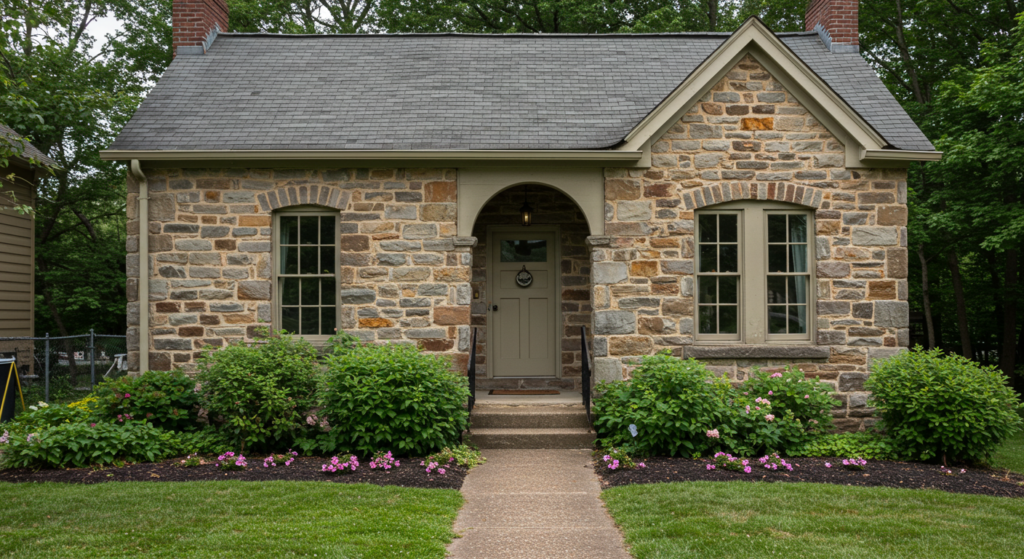Breathing new life into a historic stone house can be one of the most rewarding home renovation projects you’ll ever undertake. As someone who’s helped countless homeowners transform their stone dwellings from crumbling structures into stunning homes, I can tell you that it’s both challenging and deeply satisfying. In this comprehensive guide, I’ll walk you through everything you need to know about renovating an old stone house, from assessment to completion.
![How to Renovate an Old Stone House A beautifully restored stone house with before/after comparison]](https://homeliftshub.com/wp-content/uploads/2024/12/a-beautifully-restored-stone-house-with-before-aft-1-1024x576.png)
Understanding Your Stone House’s Character
Before diving into the renovation process, it’s crucial to understand what makes your stone house unique. These architectural gems often date back centuries, each telling its own story through worn limestone, weathered granite, or rustic fieldstone. The first time I walked into my own stone house renovation project, I was struck by the solid 18-inch thick walls that had stood firm since the 1850s.
The beauty of American stone houses often lies in the regional variations, and it is crucial to research what type of stone your house is made of. Each type has its own unique properties:
- Limestone: A sedimentary rock that is porous, meaning it can easily absorb water. It is often light in color, ranging from beige to light grey. Limestone can be vulnerable to erosion and weathering, especially in areas with high acidity or moisture.
- Granite: An igneous rock that is very hard and durable. It is typically made of various colors and textures and is very resistant to weathering, erosion, and moisture, making it a good choice for construction.
- Fieldstone: Stones that are collected from the surface of a field, and are known for their irregular shapes, sizes, and colors. The look of fieldstone can vary depending on what region it was taken from. Fieldstone adds unique character to a home due to their variations.
The Beauty of American Stone Architecture
American stone houses showcase various regional styles, as demonstrated in this comprehensive guide:
- New England: Homes often feature granite and fieldstone cottages built with stones that were sourced from the local area, giving the house a very organic look.
- Pennsylvania: The area is known for its colonial limestone structures, often featuring a lighter colored look and symmetrical designs.
- New York’s Hudson Valley: You can find stone houses that are made of locally sourced stone, giving it an old-world feel.
- Southwestern: Adobe and stone combinations are more common, as they offer protection from the harsh climate.
It’s important to also consider the age of the house, as the age of the house will often influence the type of materials that were used for the construction. This also means that the renovation process will have to take this into account, since it’s important to work with what you have, instead of trying to fight against it.
Initial Assessment: The Foundation of Success
Structural Evaluation
Your first step in any stone house renovation should be a thorough structural assessment. Here’s what you need to check:
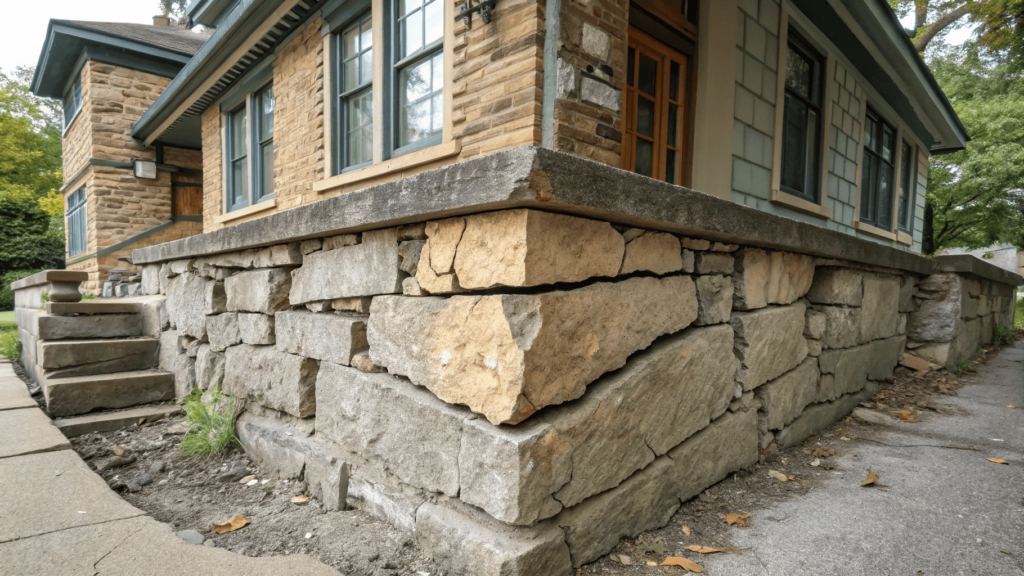
- Foundation Integrity
- Shifting or settling: Look for cracks in the foundation (especially near corners and joints), doors and windows that no longer align properly with the frames, or uneven floors (use a level to check).
- Water Damage: Look for water stains on the walls (especially near the base and in corners), mold growth, efflorescence (a white, powdery deposit caused by mineral salts), musty or damp odors, and wet spots on the floor or walls.
- Mortar Conditions: Check the mortar between the stones. Look for signs of crumbling mortar, missing mortar, cracks, or loose stones. Use a small tool to gently test the mortar – if it easily breaks or crumbles, it may need to be replaced.
- Wall stability: Check to see if the walls are straight, or if there are any bulges or leans. Use a level to check the straightness of walls and look for any visible signs of instability.
- Moisture Issues
- Water infiltration points: Check for signs of water pooling around the foundation, damaged gutters, leaks, damaged downspouts, water stains inside, damaged drywall, musty smells, and signs of mold growth.
- Interior wall dampness: To properly check if the walls are wet, use a moisture meter, and touch the walls to feel for dampness or coldness. Check the areas where there are signs of mold growth, peeling paint, or bubbling wallpaper.
- Drainage Patterns: Make sure that the ground around your house is sloping away from the foundation. Check if there are any places around your house where water is pooling or collecting. Check if downspouts are properly diverting water away from the foundation.
- Assess roof condition: Inspect the roof for any missing or damaged shingles, damaged flashing, cracks or leaks. Check the attic for water stains, mold growth, and wood rot.
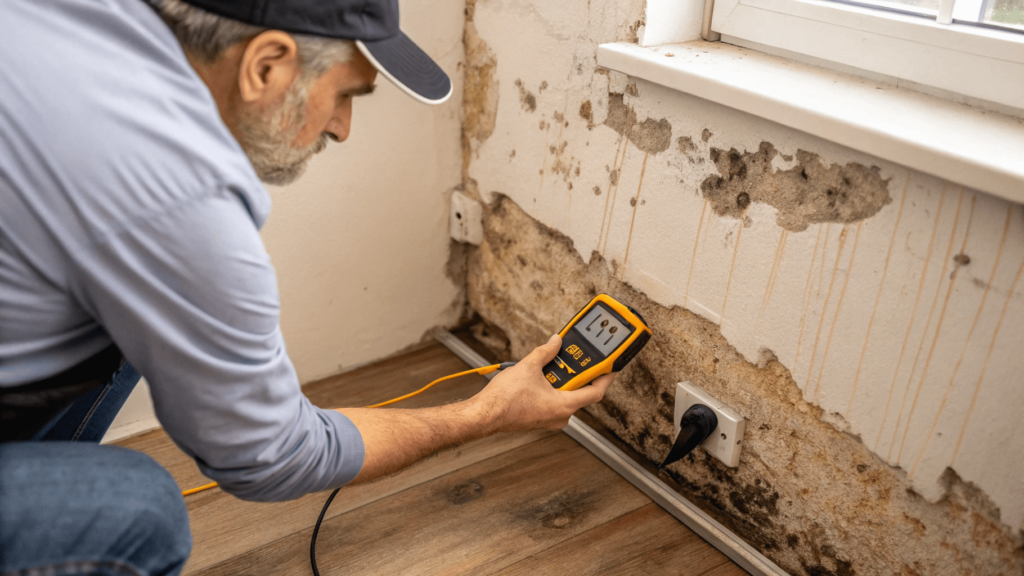
Essential Steps in Stone House Renovation
1. Stabilization and Structural Repairs
The most critical phase of your renovation is ensuring structural stability. As shown in this detailed walkthrough, I remember working on a Pennsylvania farmhouse where we discovered that years of water damage had compromised one corner of the foundation. Here’s your action plan:
- Repair Foundation Issues: There are a variety of ways to repair foundation issues, depending on what type of damage you have. If there are cracks, you can use concrete underpinning which involves reinforcing the existing foundation by pouring new concrete below it. You can also use crack injection, where epoxy or polyurethane is injected into the crack to seal it. Other methods include masonry repair, drainage improvements, soil stabilization or helical piers.
- Address Wall Bulging: You can address wall bulging with techniques such as wall ties, which involve adding metal rods or ties to connect the walls to the internal structure of the house, or masonry repair, which involves removing and replacing damaged or unstable stones.
- Stabilize Chimneys: This process involves making sure that the chimney is safe to use. This includes checking the chimney for any cracks, loose stones, or damaged mortar and properly re-pointing any damaged areas. It also involves adding chimney liners to create a safe and durable flue for the chimney.
- Reinforce Floor Joists: To properly reinforce the floor joists you must first identify the damaged joists. You can then reinforce it using sistering which involves adding a new joist along side the existing joist, using steel reinforcement which is used to strengthen the joist using metal plates or channels or adding support beams.
2. Water Management Solutions
Nothing threatens a stone house more than water. Your renovation must include:
- Professional Repointing of Deteriorated Mortar: Repointing is the process of removing old, damaged mortar and replacing it with new mortar. It’s important to hire professionals to ensure that it is done properly, since the wrong type of mortar can cause even more damage. They will also know how to properly remove the old mortar without damaging the stones. The professionals will also be knowledgeable on the different types of mortars (lime based, cement based, etc), and will know how to properly apply the new mortar.
- Installation of Proper Drainage Systems: A French drain system involves installing a trench around the foundation of the home that is filled with gravel and a perforated pipe, to ensure that water is properly diverted away from the foundation. A swale is a shallow trench used to divert surface water away from your home. You can also use surface drainage, which involves shaping the land surface in order to divert water away from your home.
- Repair or Replacement of Gutters: Gutters are an important part of your roof, and if they are not properly functioning they will allow water to pour down your stone walls, and can cause damage to the foundation. It is also important to install downspouts that can properly divert water away from the foundation.
- Waterproofing Where Necessary: You can waterproof your home with different types of sealants that are made from polymers, and will seal out water. The type of material you use will depend on the part of the house that you are waterproofing (e.g. silicone sealants for window frames).
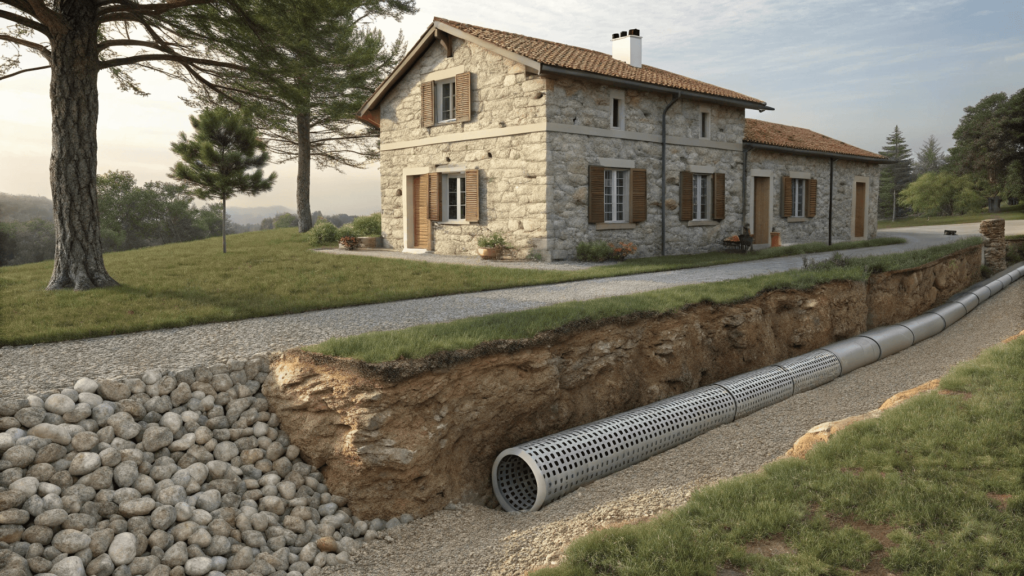
3. Modern Systems Integration
One of the trickiest aspects of stone house renovation is incorporating modern conveniences while preserving historical character. Here’s how to approach it:
Electrical Updates
- Surface-mounted Conduit: This is when you install electrical wiring on the surface of the walls, instead of behind the walls. It can be hidden using metal or plastic covers, and is often done when it isn’t feasible to install the wiring behind the stone walls. This process involves planning the layout, using conduit benders and appropriate fastening techniques.
- Creating Chases in Non-Structural Walls: Chases are openings that are made in the walls, so you can hide pipes or wires. This requires careful planning, measuring, and making sure that you aren’t damaging any of the structural parts of your home.
- Install Period-Appropriate Fixtures: Period appropriate fixtures are light fixtures, outlets, switches and other hardware that compliment the overall aesthetic of your old stone house. It often means using designs, colors and materials that are compatible with your design style.
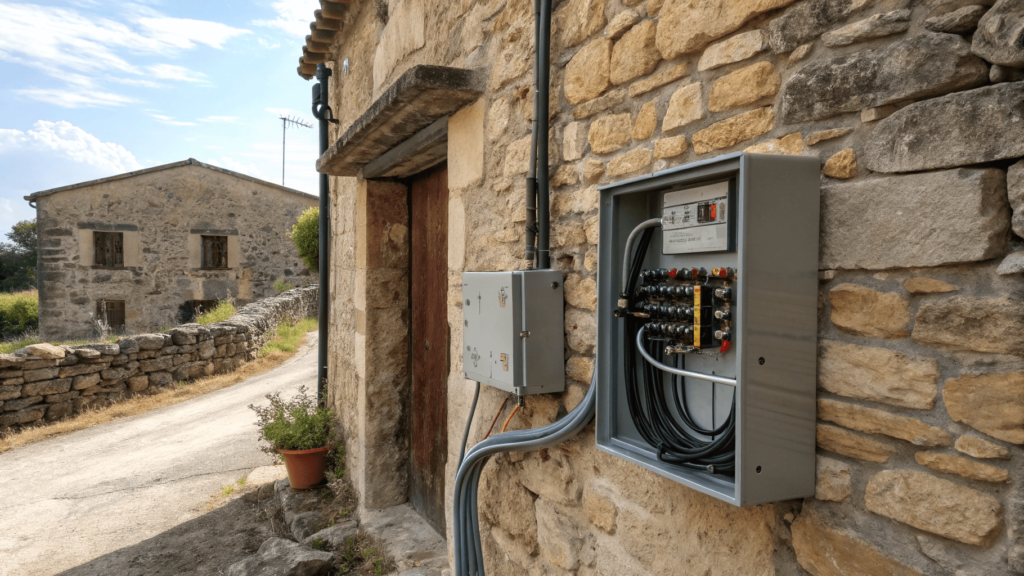
Plumbing Integration
- Utilize Existing Chimney Chases: Chimney chases are the openings that allow smoke and gases to escape from your home. Some homeowners choose to utilize these for their plumbing, and you must consider if this is an option, as this can minimize the intrusion on the historic structure. This involves careful planning, running the pipes through the chases, and making sure the pipes are properly secured and insulated.
- Create Dedicated Utility Spaces: This involves setting up areas for boilers, water heaters, pumps and other plumbing fixtures. These spaces must be properly ventilated, insulated, and easily accessible for repairs.
- Consider Exposed Copper Piping for Aesthetic Appeal: Exposed copper piping can add a vintage or industrial look. You must ensure that you use high quality copper piping, and that it is properly sealed and secured.
Climate Control
- Install mini-split systems: These are systems that offer a non-intrusive approach since the units are small and can be mounted on your walls. This method requires careful installation and a proper understanding of the different steps involved.
- Utilize Radiator Heating Where Possible: Radiator heating can offer a classic look and feel, as well as a good way to heat your home. It involves installing a hot water heating system throughout your house.
- Add subtle ventilation systems: This includes using hidden or discreet ventilation systems that will ensure that your old stone house is properly ventilated. This will often include placing fans or vents that are not easily visible but will still provide good ventilation.
Preserving Historical Character
While modernizing your stone house is important, maintaining its historical integrity is equally crucial. Consider these aspects:
Windows and Doors
- Restore Original Windows When Possible: Restoring original windows involves removing them from the frames, carefully cleaning them, repairing any damaged wood and glass, adding new glaze to hold the glass in place, and then properly reinstalling them.
- Use Period-Appropriate Replacements If Necessary: When replacing your windows, try to use the exact type that was there previously, so it doesn’t detract from the historical design of your home. Research which type of materials, colors and designs were often used for your region and type of home.
- Maintain Original Door Frames and Hardware: To maintain original door frames, you must carefully remove the doors, clean them and the frames, repair any damage and then properly reinstall the doors into their frames. The same must be done for the hardware.
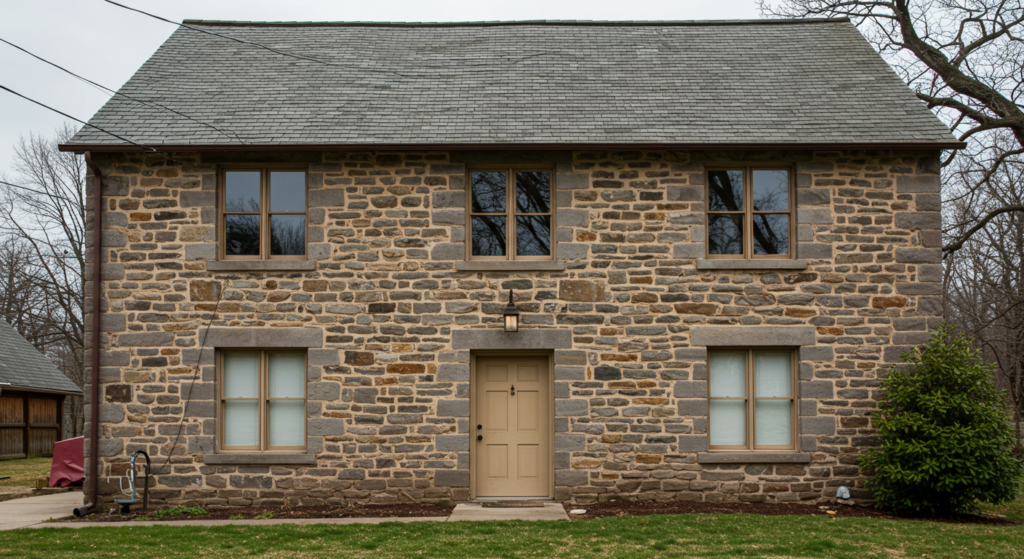
Interior Features
- Preserve Original Flooring: This is often done by carefully cleaning the floors, repairing any damaged floor boards, removing old paint or varnish, and then applying new coats of seal or finish to restore them to their original glory.
- Maintain Exposed Stone Walls Where Appropriate: Properly maintain the stone walls by carefully cleaning the stone, and repairing any cracks or damaged mortar. You also need to ensure that the walls have proper ventilation.
- Restore Original Woodwork: This process involves cleaning the woodwork, removing any old paint or varnish, making necessary repairs, and then adding a new coat of paint or finish to help protect it.
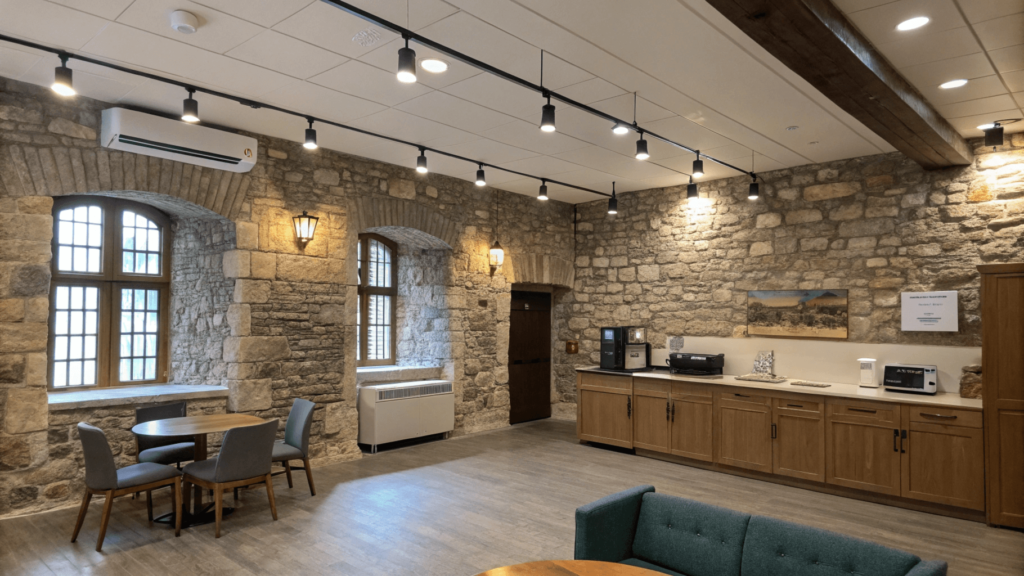
Budget Considerations
Renovating a stone house requires careful financial planning. Here’s a typical budget breakdown:
| Renovation Component | Percentage of Budget | Average Cost Range |
|---|---|---|
| Structural Repairs | 30-40% | $30,000-80,000 |
| Systems Updates | 20-25% | $20,000-50,000 |
| Interior Finishing | 15-20% | $15,000-40,000 |
| Windows/Doors | 10-15% | $10,000-30,000 |
| Exterior Work | 10-15% | $10,000-30,000 |
Factors Influencing the Cost:
- Size of the Home: Larger homes will require more materials and labor, which will drive up the costs.
- Complexity of the Project: The more complex the project is, the more it will cost. This includes the condition of the home, and if any serious structural issues are found.
- Choice of Materials: The materials you choose will have a big impact on the overall cost. If you choose to use luxury or high-end materials, then the cost will be much higher.
- Location of the Home: The region that you live in will influence the prices for both material and labor costs.
- The Contractors that you Hire: Different contractors have different rates, and their prices will also affect the cost.
- Unexpected Issues: During a home renovation, there might be unexpected issues that arise that may drive up the costs.
Common Challenges and Solutions
Challenge 1: Moisture Management
Challenge 2: Energy Efficiency
Challenge 3: Modern Comfort vs. Historical Preservation
Solution: Focus on invisible upgrades that maintain the home’s character while improving livability. For example, install radiant floor heating under authentic-looking floor materials. For example, this means planning out the system, making the necessary measurements, and installing the heating system under your floors.
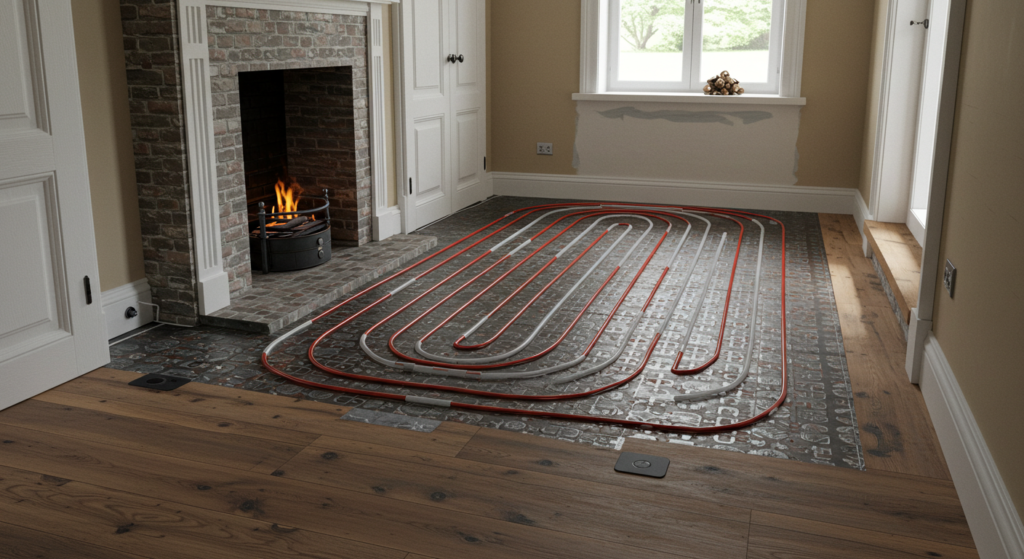
DIY vs. Professional Work
While there are aspects of stone house renovation you can tackle yourself, some tasks require professional expertise:
DIY-Friendly Tasks:
- Basic mortar repairs (small patching).
- Interior painting
- Hardware restoration
- Garden drainage improvements
Professional-Required Work:
- Structural repairs (due to the potential danger and complexities).
- Major repointing (due to specialized tools and knowledge).
- Systems integration (due to electrical, plumbing, and HVAC knowledge required).
- Window restoration (due to specific tools and the fragile nature of old windows).
Timeline and Planning
A typical stone house renovation takes 8-18 months. Here’s a basic timeline:
- Months 1-2: Assessment and planning. This includes researching your property, creating a budget, finding a good contractor, and securing any needed permits.
- Months 2-6: Structural repairs and stabilization. This involves repairing any damaged foundations or walls, and ensuring the stability of your home.
- Months 6-12: Systems updates and major repairs. This involves updating the electrical, plumbing, and HVAC systems as well as making any needed structural repairs.
- Months 12-18: Interior finishing and detail work. This involves working on the finishing touches of your renovation and ensuring that every detail has been properly addressed.
Maintaining Your Renovated Stone House
After renovation, proper maintenance is crucial:
- Annual inspection of pointing and masonry (look for any cracks or damage, and repair as needed).
- Regular gutter cleaning (remove any debris that could cause blockage).
- Immediate attention to water issues (address any leaks or pooling water).
- Seasonal HVAC maintenance (change filters, check for any leaks, and ensure the system is running smoothly).
- Periodic resealing of windows and doors (inspect seals and replace as needed).

Legal Considerations:
When working on an old stone house, it’s also important to research and adhere to local building regulations. This includes securing permits and ensuring that your materials and building methods are compliant with local requirements. It also includes researching if any specific requirements need to be adhered to when working on a historic building.
Conclusion
Renovating an old stone house is a journey that requires patience, dedication, and respect for historical craftsmanship. While the process can be challenging, the result is a unique, character-filled home that will stand for generations to come. Whether you’re tackling this project yourself or working with professionals, remember that every stone house tells a story – your renovation is just adding another chapter.
Ready to start your stone house renovation journey? Begin with a thorough assessment and professional consultation to understand the scope of your project. And remember, the key to success is in the planning and patience to do it right.

